2015 | Installation with 5 Siachen soldier’s sleeping bags, five headphones and audio | Approximate installation (width x depth x height): 65 x 94 x 90 in. / 165.1 x 238.7 x 228.6 cm. | Photos: LAMO, Leh
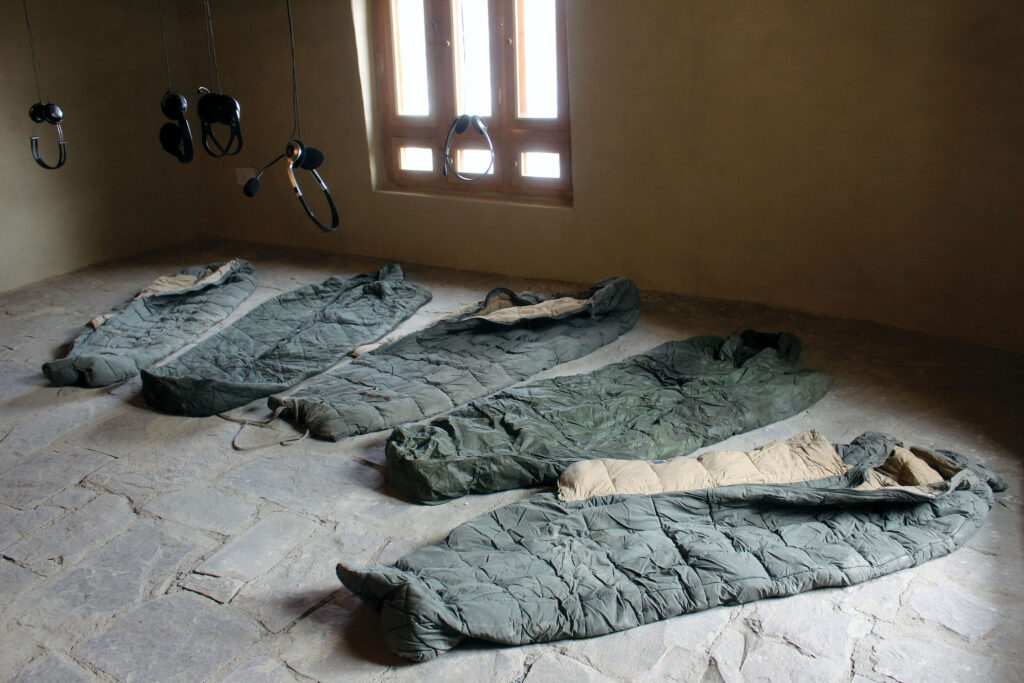
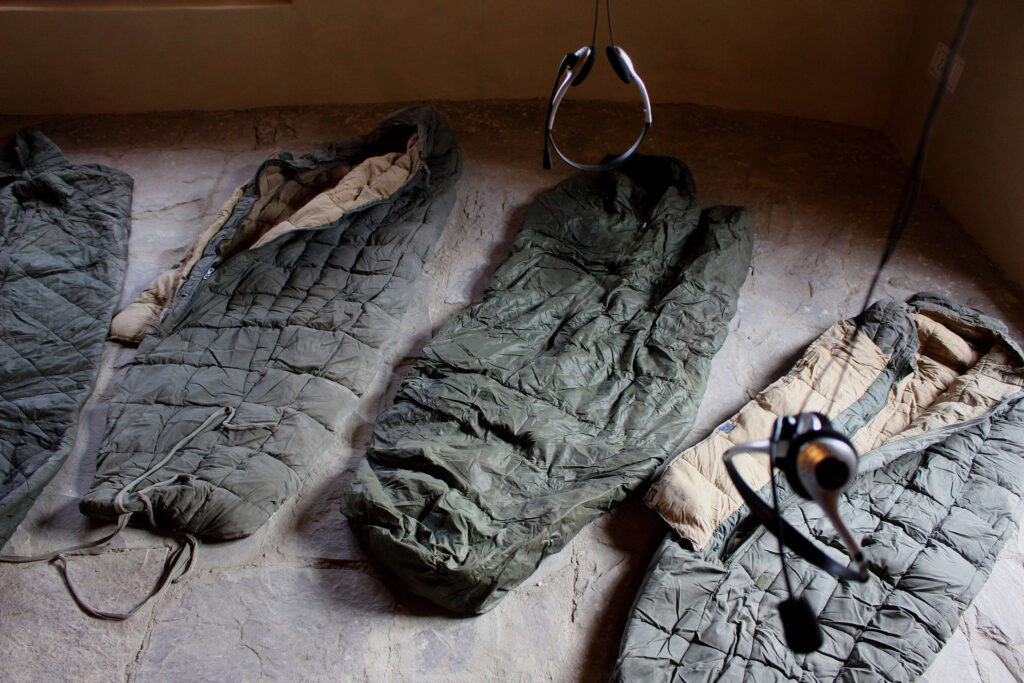
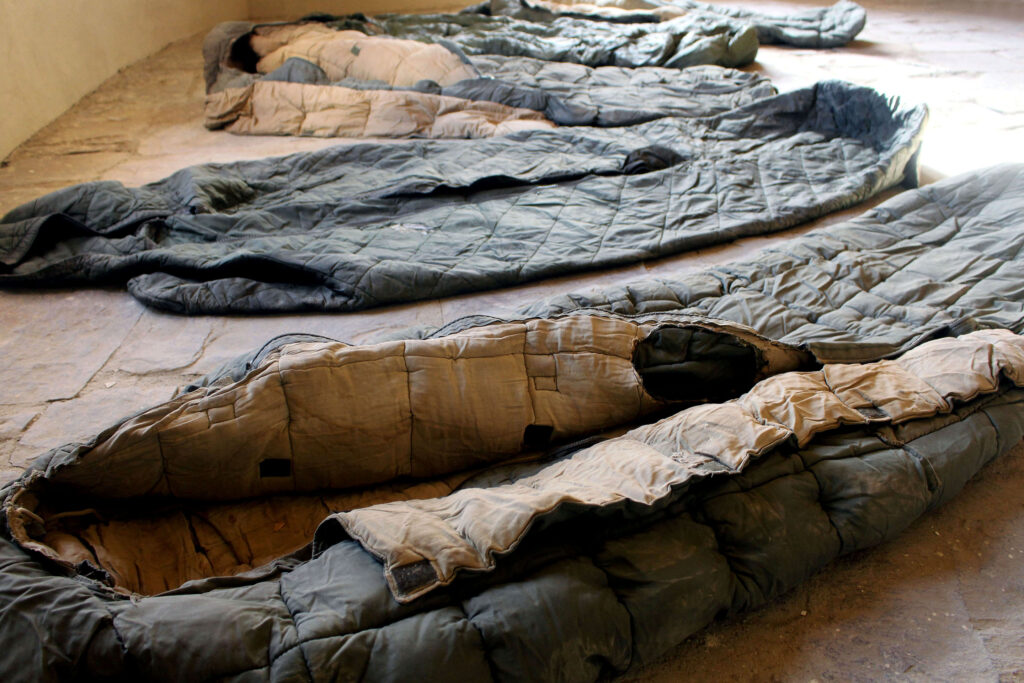
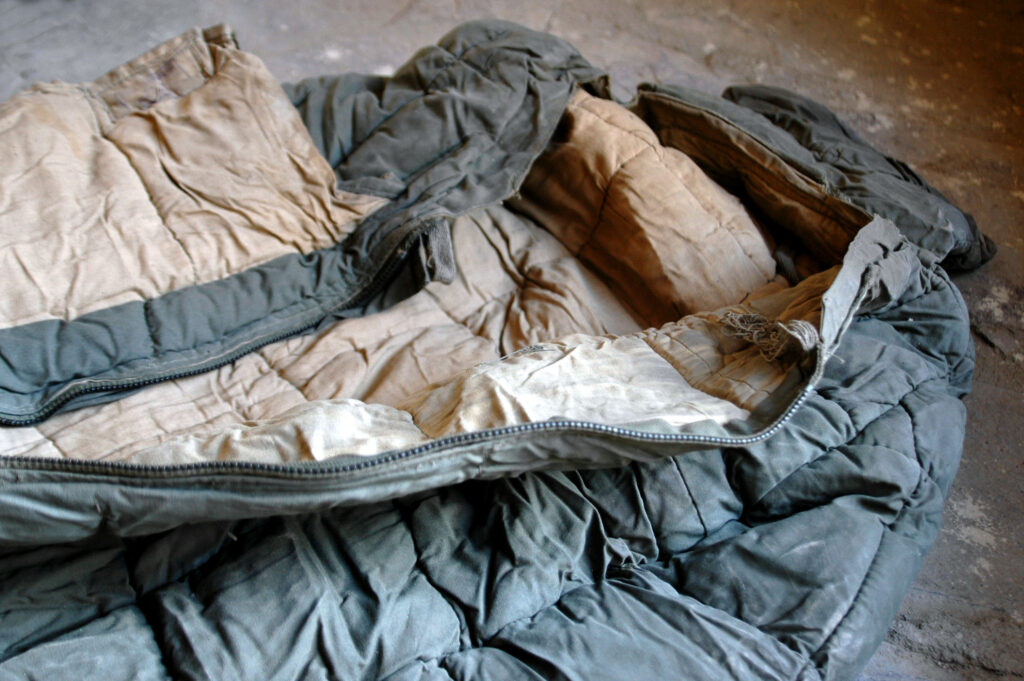
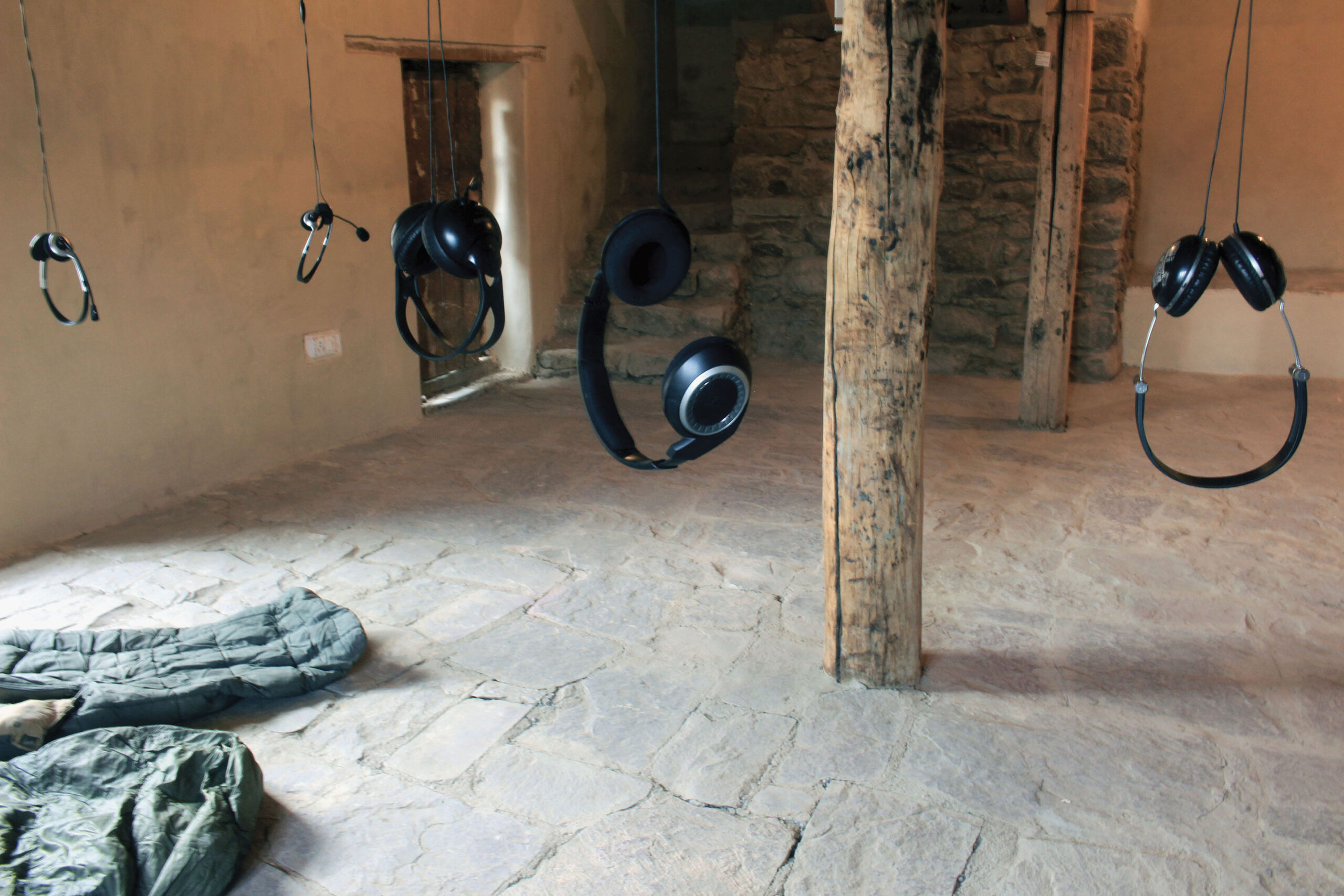
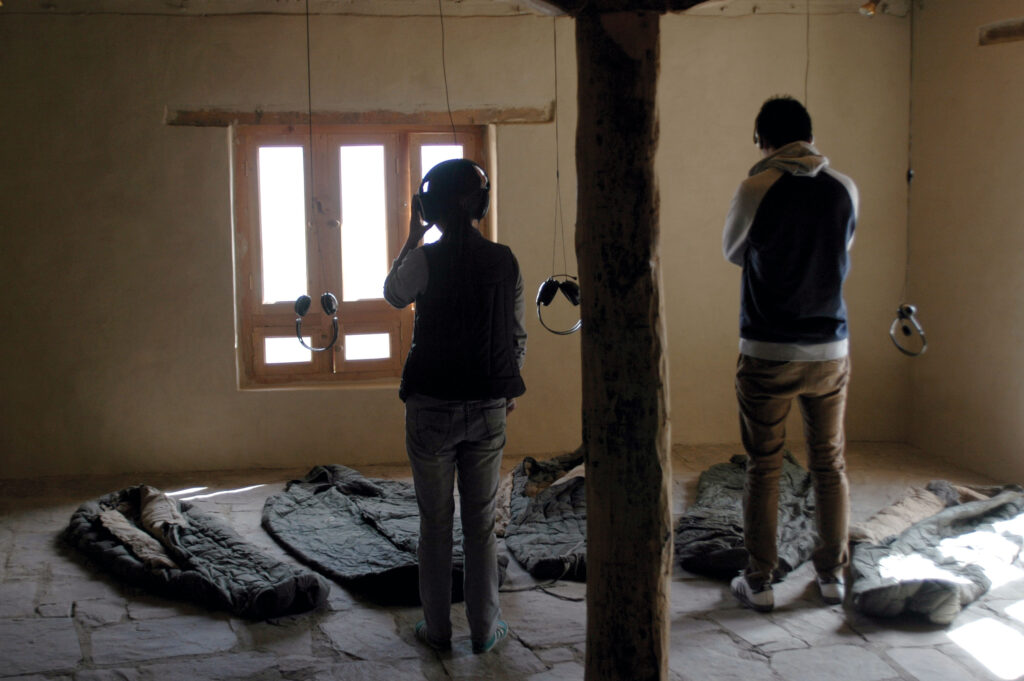
Dream Speech, consists of five sleeping bags that have been placed next to each other and were used by soldiers on the Siachen Glacier. This artwork also includes a five-channel audio track with voices of four soldiers and an officer, who appear to be communicating with each other through a dream. The glacier lies at an altitude of approximately 5,753 meters above sea level. The lack of oxygen disrupts the sleeping patterns of the soldiers; often making their dreams more vivid. The artist reflects on the dream state of these soldiers and how they might communicate with each other through a subconscious medium.
Dreams are an outlet to express our subconscious thoughts. Our dreams are endless even though we may not remember them. During a lifetime, we spend an average of six years dreaming. Sigmund Freud (1856-1939), theorized that the content of dreams is shaped by an unconscious wish fulfillment. The title of the artwork is taken from the writing of Emil Kraepelin (1856-1926); a German psychiatrist who developed the important concept of ‘Dream Speech’, (originally written in German as ‘Traumsprache’), which describes the internal speech that occurs during a dream.
Dream Speech, facilitates a personal conversation between four soldiers and an officer while they are sleeping. After a typical day of rigid military protocol, the soldiers find solace in their dreams. They express their feelings of anxiety, vulnerability and repression, sometimes with a sense of humour, from the confinement of their sleeping bags. The durable fabric of the sleeping bag is crucial to a soldier for his comfort and protection. This envelope of security that surrounds him while he sleeps, suggest an intimate preservation of his ominous dreams.
A dedicated headphone is attached to each sleeping bag, where the viewer is only able to listen to one soldier’s voice at a time. A member of the audience could attempt to piece together the fragments of the narrative by individually listening to the audio tracks of all five headphones. The silent pauses between words and sentences allow the listener to include their own subliminal thoughts within the soldiers’ dreams. The intimate audio narrative developed by the artist uses references from various literary sources about war; and personal recorded conversations, that he has conducted with various army personnel since 2007.